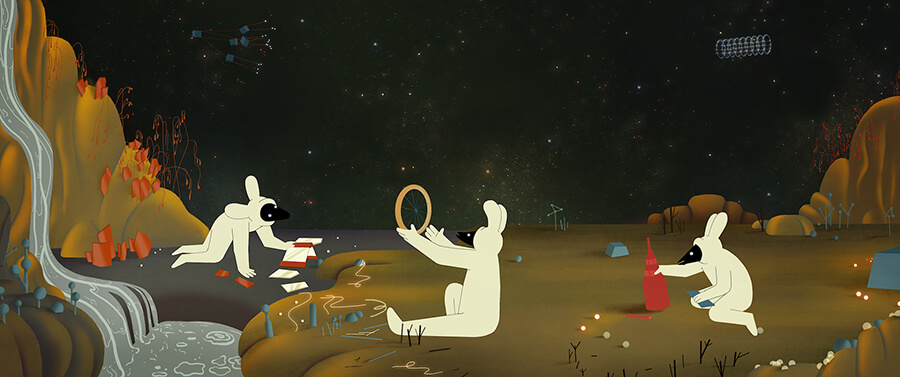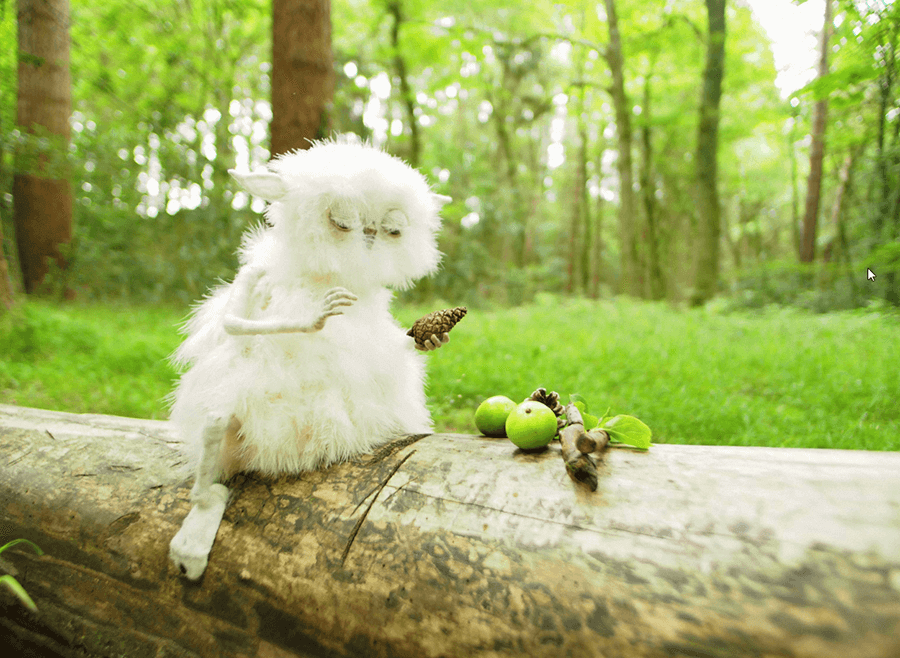Laws of Motion: London International Animation Festival 2022 Review
At this year’s London International Animation Festival, audiences were invited to dive deep into a myriad of animated worlds. The programme, eclectic as ever, encompassed animated film in its many forms, including children’s animation, experimental film, animated documentary, and an additional series of industry talks.
The closing Best of Fest gala on Sunday, perhaps best indicated the nature of the festival. Awards were made based on a capacity for the bizarre or irreverent, the transformative and thought provoking. LIAF’s best film was awarded to The Dog Apartment, directed by Priit Tender and produced by Estonian studio, Nukufilm. The characters in this stop motion short were imbued with a strange, allegorical luminosity. A retired ballet dancer, an apartment that barked subject to a steady supply of sausages and a cockerel with an axe for a face. Elsewhere, LIAF awarded the epic and odyssey-inducing animations of Wataru Iwata. Iwata’s ‘Sphere’ evoked an endless continuum in space, a stream of technologically engineered animation and tunnel-like data visualizations set to an impressive score of piano music.

Wataru Iwata’s ‘Sphere’
Whichever part of LIAF’s programme you were most drawn to, there was a sense of exploration and the dipping of one’s toe into a ready-realised animated world. Abigail Addison investigated the art of world-building in this year’s figures in focus program, ‘The Magical World’. During the screening, she brought together nine shorts which drew inspiration from the surrealist Leonora Carrington, an often underappreciated and deeply hermetic artist. Carrington’s painterly lands depict the occupations of strange creatures, their involvement with alchemy, archaic magic practices, and entry into the spirit world.
Following the films, Addison gathered three directors; Anna Bunting-Branch, Renee Zhan and Réka Bucsi as well as Carmen Hannibal, a PhD Candidate of Animation Studies at the RCA. Addison spoke of a ‘science’ to the worlds each of the directors had created. With animated film it was possible to start from nothing and build outwards, subject to an idiosyncratic authorship. The animators are in effect demi-gods, like Carrington, who said “I’ve always had access to other worlds. We all do. Because we dream.”
The task of imagining a world beyond our own, of wanting a world into existence, must begin somewhere. Much like the empirical laws of science that define our world, these can only be realized through repeated experimentation and observation. Réka Bucsi described her approach to filmmaking in these terms. She starts to work on small scenes or interactions between characters. And then, once she has a healthy collection of these, she can begin to draw parallels between their behaviours, a process which culminated in her film LOVE. In a sense, Bucsi is a zoologist to her own creations. LOVE explores romantic affection in three chapters, observing the inhabitants of fantastical planets with a scientific impartiality.

Réka Bucsi’s ‘Solar Walk’
This sentiment became more apparent at Réka Bucsi’s retrospective held at the Horse Hospital later on in the festival. During ‘Solar Walk’, her most ambitious film to date, mysterious bunny-eared creatures exhibit a scientific curiosity of their surroundings. The film begins with their experiments. Objects floating in the cosmos, seemingly unrelated, are joined to form kinetic sculptures. At first the forces impacting the objects are unknown, then it is revealed to be the central creatures of Bucsi’s tale doing all the work, licking and sticking parts together in a child-like fashion.
There is perhaps something self-referential about this scene to Bucsi’s process. Elsewhere at the festival, other creators used their artistic process to further inform the act of storytelling. Ainslie Henderson approached the stage to accept his award for Best British Film, a worthy accolade to his ambitious stop-motion short ‘Shackle’, shot entirely outdoors beneath a canopy of trees. Henderson noted that the idea for the film initially came from the principle of making art for art’s sake. His characters, beautifully fabricated from natural materials, are similar to Busci’s in their playfulness. One character, made from downy white feathers, begins by selecting a pinecone. In their hands it cycles through its natural variations. Henderson makes wonderful use of replacement animation. All the while the world around them changes. The dappled light between the trees shifts in temporal motion, the breeze enacts the canopy into an agitated, rhythmic dance.

Ainslie Henderson’s ‘Shackle’
Alternately to Bucsi, Henderson extracts his visual language from the natural world, rather than fabricating it entirely. He sheds light on previously mundane objects, a pinecone, a fallen leaf or crab apple. In ‘Shackle’ these are magic objects, coveted by his characters and effective talismans for the entrance into magical worlds or perhaps the very experience of artmaking itself. Once the creatures of Shackle have perfected their technique, the forest is drawn into harmony, a symphony of terrestrial magic awaits.
There is, it seems, something in the spirit of LIAF which encompasses Ainslie Henderson’s words ‘art for art’s sake’. Each year, the programme offers films new perspectives, new plains of colour, texture and sound to roam. All you need bring is an open mind.

